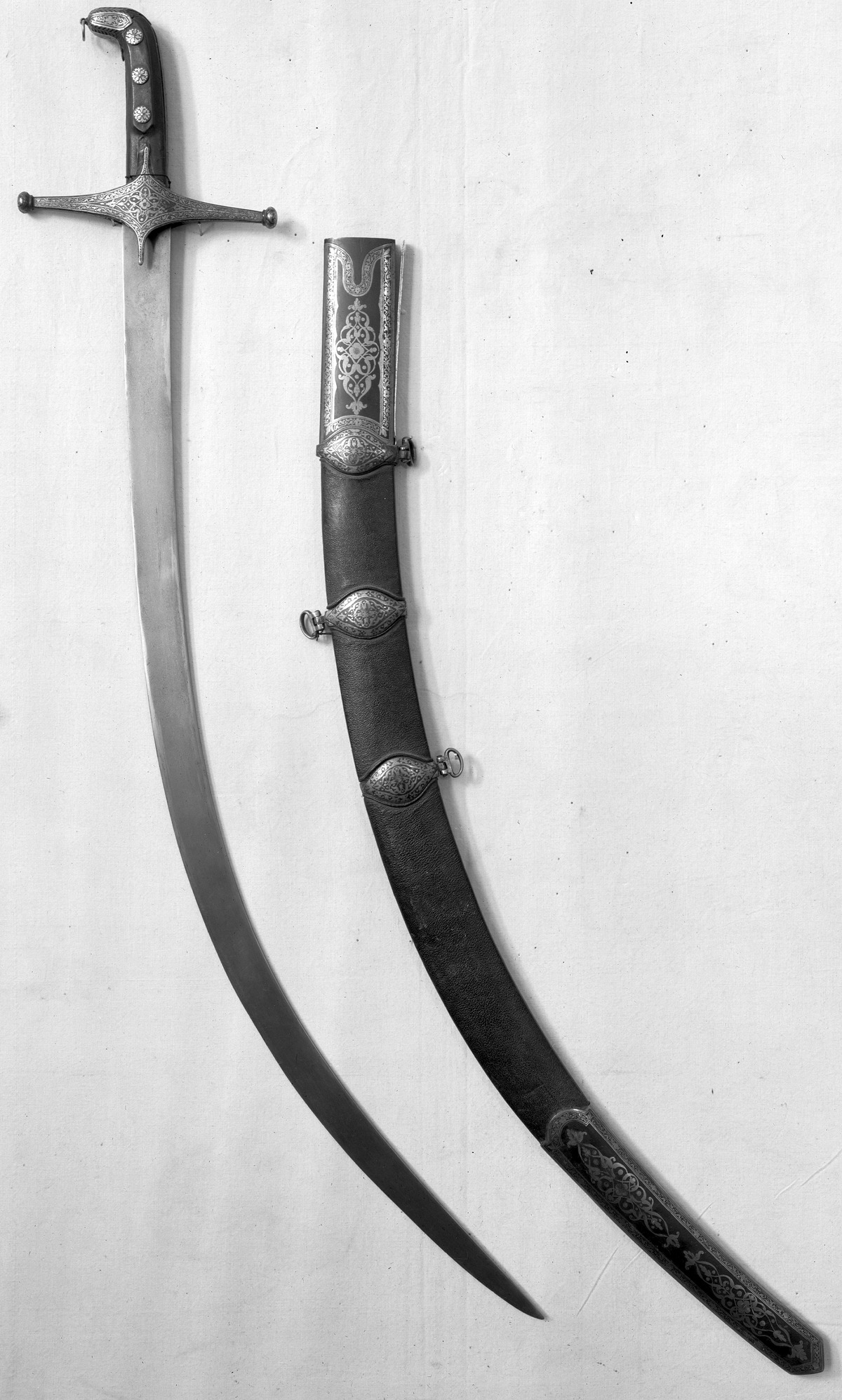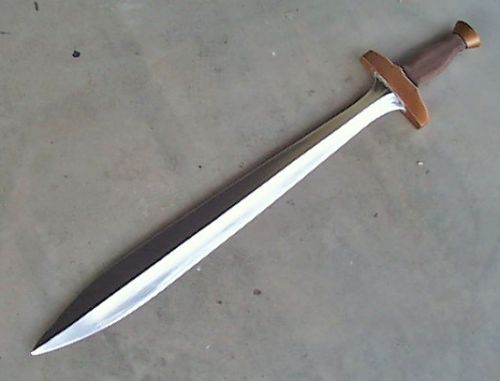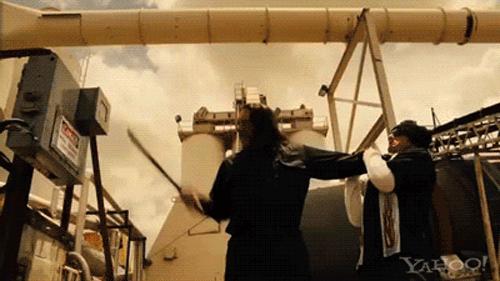I’m not just weirdly into knives — this is something a student of mine asked about, and it seemed worthy of a more thorough treatment!
To start with, here’s a little Arnold Schwarzenegger to get us in the knife mood. This is from Predator. Enjoy.
Fun reminder: that man was the governor of my home state for 8 years. We called him the Governator, as a combination of Governor and Terminator
But Governator also works as a nifty mashup of governor and gubernator (Latin for a boat pilot which gets extended to refer to the man who pilots the ship of state — a woman gubernator is a gubernatrix). That’s not what we Californians were going for at all. But it gave me an excuse to talk about Latin!
So, all that aside, we’re here to talk about knives. What’s a μάχαιρα, you might ask? Athenaze says it’s a knife, and we’ve seen people killing wolves and other things with their μάχαιραι.
This word can just be a generic sort of knife (there’s loads of examples of it just being sort of your run-of-the-mill knife, with no special characteristics), but it can also refer to some specific knives.

One is a carving knife — in Euripides’ satyr play about the Cyclops Polyphemus, Polyphemus asks for someone to sharpen his μαχαίρας as quickly as possible, because he wants to carve up some of Odysseus’ men.
It can also refer to a short sword or a dagger, and can refer to a sabre, as opposed to a ξίφος (a straight sword).
For example, here’s something Xenophon has to say about knife choices (On Horsemanship 12.11):
ὡς δὲ τοὺς ἐναντίους βλάπτειν, μάχαιραν μὲν μᾶλλον ἢ ξίφος ἐπαινοῦμεν: ἐφ᾽ ὑψηλοῦ γὰρ ὄντι τῷ ἱππεῖ κοπίδος μᾶλλον ἡ πληγὴ ἢ ξίφους ἀρκέσει.
If we’re talking about harming your enemy, we suggest a μάχαιρα rather than a ξίφος. For because of how high up a horse rider is, the strike from a curved knife (a κοπίς) will get the job done better than a straight sword (a ξίφος).
So, I’m envisioning these about like so:
|
|
|
In Plato’s Euthydemus, we even hear about sword dancers using a μάχαιρα. Sword dancing is super cool and has a long tradition in tons of cultures, both in martial and entertainment contexts. I encourage you to go down this Wikipedia rabbit-hole if you’d like to learn more.
Intermission! Here’s a gif of Danny Trejo (as Machete, in the 2010 film Machete) killing Steven Seagal with a swordknife (a new genre I’m coining to describe all these things that are a long blade of some sort).
Also, here’s a sword-based electrocution that is definitely not something you should try at home. It’s just not how electricity works for anyone except Machete.

And we’re back. The main other place I want to talk about knives is in the context of Roman Judea. Part of this has to do with the fact that the big Greek dictionary (the LSJ) lists “an assassin’s weapon” as one of the meanings of μάχαιρα. And this leads us back to Latin, and a particularly famous knife-related assassin group, known as the Sicarii. There’s debate about the relationship between the Sicarii and the Zealots (ζηλωταί) in Judea, but what we do know is that both these groups were part of the resistance to Roman rule in the 1st century CE. And the Sicarii’s name means “dagger men,” from the Latin word sica (a small dagger), which they were known to carry in their cloaks. In a very literal sense, they were a “cloak and dagger” organization. Possibly one of the very first.
There is a Greek version of this Latin word, which is σικάριος. It occurs, but not a ton outside of specific discussions of the Sicarii. We do see it in Acts 21:38 though, for instance. We see our best discussion of the Sicarii and the Zealots in Josephus and he tells us that the Sicarii use ξιφίδια (Bellum Judaicum 2.13). A ξιφίδιον is a tiny ξίφος. That -ιον ending is a diminutive ending. So now we have yet another knife word, which is a tiny-sword.
 [side note: this word comes through a Romance language trajectory and gives us the Spanish word sicario which means hitman and is the title of a 2015 movie]
[side note: this word comes through a Romance language trajectory and gives us the Spanish word sicario which means hitman and is the title of a 2015 movie]
Anyway, that’s a whole separate knife-related story, but we do have one last passage with a μάχαιρα from this time period.
τότε λέγει αὐτῷ ὁ Ἰησοῦς Ἀπόστρεψον τὴν μάχαιράν σου εἰς τὸν τόπον αὐτῆς, πάντες γὰρ οἱ λαβόντες μάχαιραν ἐν μαχαίρῃ ἀπολοῦνται. Matthew 26.52
And then Jesus said to him, “Put your μάχαιρα back in its place. For all those taking the μάχαιρα will die by the μάχαιρα.”
Ἀπόστρεψον = aorist imperative of ἀπο-στρέφω, to turn back
τόπος, -ου, ὁ — place
ἀπολοῦνται = future of ἀπόλλυμι. Here, it means “die”
Here’s the Latin, if you want it:
tunc ait illi Iesus converte gladium tuum in locum suum omnes enim qui acceperint gladium gladio peribunt.
So, that’s a lot of info, and I don’t know that it really solves the question we started with, of “what is a μάχαιρα?” But it gives us a lot of info to work with.
I’ll leave you with a real knifey scene from Kill Bill. You’re welcome.






no replies